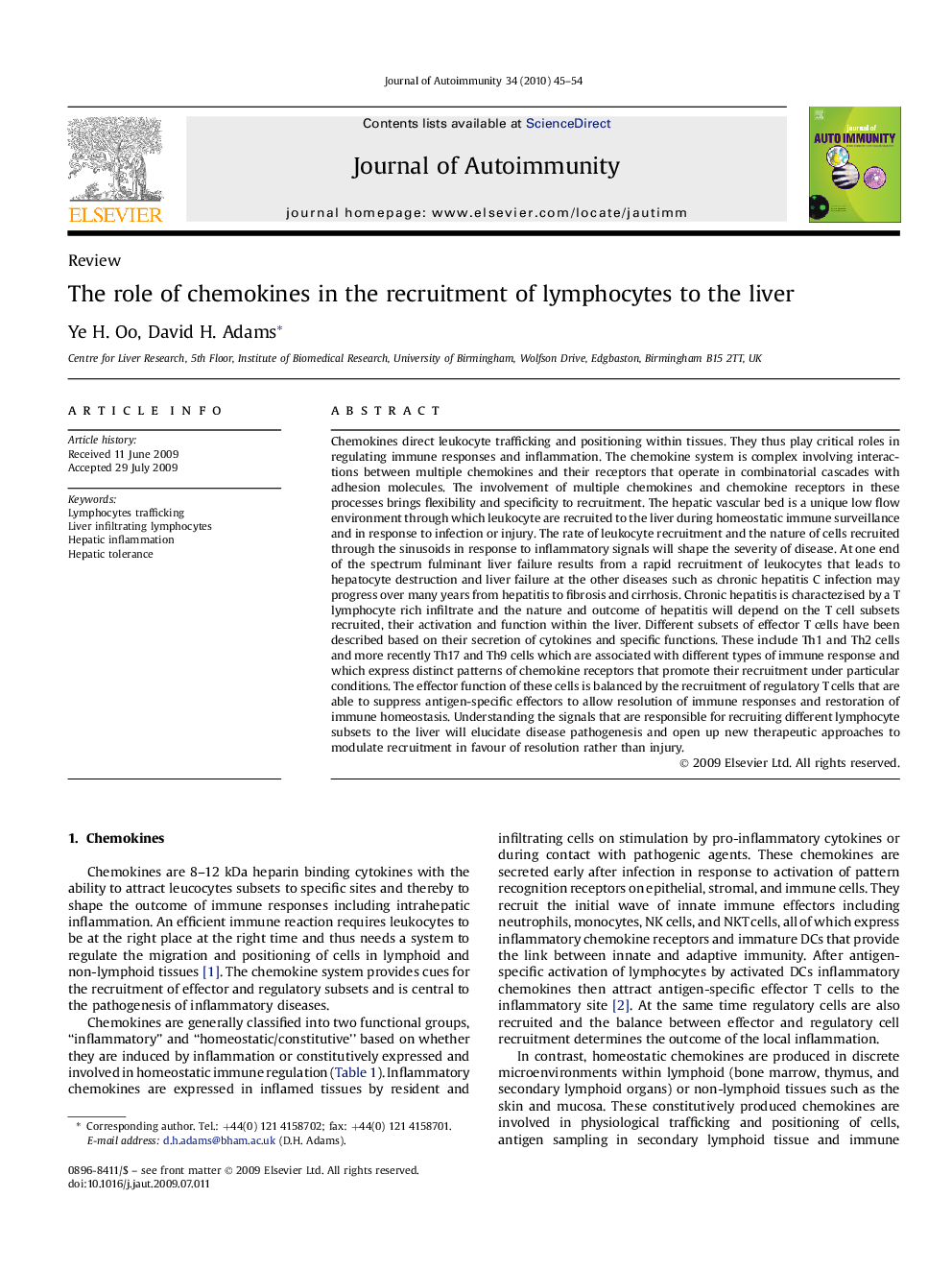| Article ID | Journal | Published Year | Pages | File Type |
|---|---|---|---|---|
| 3368035 | Journal of Autoimmunity | 2010 | 10 Pages |
Chemokines direct leukocyte trafficking and positioning within tissues. They thus play critical roles in regulating immune responses and inflammation. The chemokine system is complex involving interactions between multiple chemokines and their receptors that operate in combinatorial cascades with adhesion molecules. The involvement of multiple chemokines and chemokine receptors in these processes brings flexibility and specificity to recruitment. The hepatic vascular bed is a unique low flow environment through which leukocyte are recruited to the liver during homeostatic immune surveillance and in response to infection or injury. The rate of leukocyte recruitment and the nature of cells recruited through the sinusoids in response to inflammatory signals will shape the severity of disease. At one end of the spectrum fulminant liver failure results from a rapid recruitment of leukocytes that leads to hepatocyte destruction and liver failure at the other diseases such as chronic hepatitis C infection may progress over many years from hepatitis to fibrosis and cirrhosis. Chronic hepatitis is charactezised by a T lymphocyte rich infiltrate and the nature and outcome of hepatitis will depend on the T cell subsets recruited, their activation and function within the liver. Different subsets of effector T cells have been described based on their secretion of cytokines and specific functions. These include Th1 and Th2 cells and more recently Th17 and Th9 cells which are associated with different types of immune response and which express distinct patterns of chemokine receptors that promote their recruitment under particular conditions. The effector function of these cells is balanced by the recruitment of regulatory T cells that are able to suppress antigen-specific effectors to allow resolution of immune responses and restoration of immune homeostasis. Understanding the signals that are responsible for recruiting different lymphocyte subsets to the liver will elucidate disease pathogenesis and open up new therapeutic approaches to modulate recruitment in favour of resolution rather than injury.
